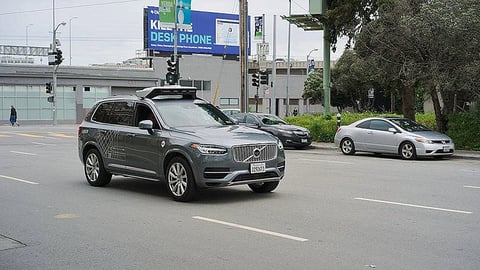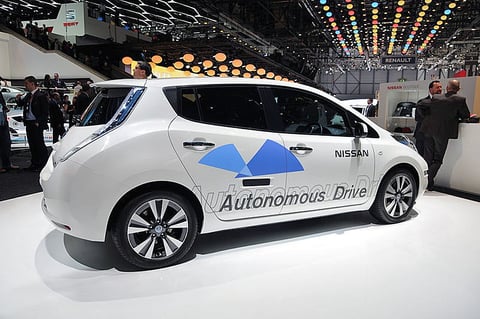
The autonomous vehicle technology is rapidly becoming the driving force in the automobile industry. Automakers from all over the globe are joining forces with top tech giants such as Google and other high-profile start-ups to develop next-generation self-driving cars. Recently, China also opened its road to self-driving cars. Popular ride-sharing services such as Uber and Lyft have also become staunch advocates of autonomous vehicles because they will not only decrease the risk of road accidents but also reduce fuel consumption significantly.

Every month new advanced driver-assistance systems (ADAS) and other cutting-edge self-driving innovations hit the automobile market. Apart from machine learning, Internet of Things (IoT), and the cloud, two technologies namely LIDAR (Light Detection and Ranging) and RADAR (Radio Detection and Ranging) seem to be leading the way in the development of advanced self-driving vehicles. But which types of the sensor will provide the most value is still uncertain. In this article, we will discuss what both technologies are and compare them with each other in detail.
How LIDAR Works
The LiDAR instrument emits rapid laser signals, sometimes up to 150,000 pulses per second. The signals bounce back from the obstacles. The sensor positioned on the instrument measures the amount of time it takes for each pulse to bounce back. Thus, the instrument can calculate the distance between itself and the obstacle with accuracy. It can also detect the exact size of the object. LiDAR is commonly used to make high-resolution maps.
How RADAR Works
The RADAR system works in much the same way as the LiDAR, with the only difference being that it uses radio waves instead of laser. In the RADAR instrument, the antenna doubles up as a radar receiver as well as a transmitter. However, radio waves have less absorption compared to the light waves when contacting objects. Thus, they can work over a relatively long distance. The most well-known use of RADAR technology is for military purposes. Airplanes and battleships are often equipped with RADAR to measure altitude and detect other transport devices and objects in the vicinity.
Which One Will Dominate the Market
Most autonomous vehicle manufacturers including Google, Uber, and Toyota rely heavily on the LiDAR systems to navigate the vehicle. The LiDAR sensors are often used to generate detailed maps of the immediate surroundings such as pedestrians, speed breakers, dividers, and other vehicles. Its ability to create a three-dimensional image is one of the reasons why most automakers are keenly interested in developing this technology with the sole exception of the famous automaker Tesla. Tesla's self-driving cars rely on RADAR technology as the primary sensor.
High-end LiDAR sensors can identify the details of a few centimeters at more than 100 meters. For example, Waymo's LiDAR system not only detects pedestrians but it can also tell which direction they’re facing. Thus, the autonomous vehicle can accurately predict where the pedestrian will walk. The high-level of accuracy also allows it to see details such as a cyclist waving to let you pass, two football fields away while driving at full speed with incredible accuracy. Waymo has also managed to cut the price of LiDAR sensors by almost 90% in the recent years. A single unit with a price tag of 75,000 a few years ago will now cost just $7,500, making this technology affordable.

However, this technology also comes with a few distinct disadvantages. The LiDAR system can readily detect objects located in the range of 30 meters to 200 meters. But, when it comes to identifying objects in the vicinity, the system is a big letdown. It works well in all light conditions, but the performance starts to dwindle in the snow, fog, rain, and dusty weather conditions. It also provides a poor optical recognition. That’s why, self-driving car manufacturers such as Google often use LIDAR along with secondary sensors such as cameras and ultrasonic sensors.
The RADAR system, on the other hand, is relatively less expensive. Cost is one of the reasons why Tesla has chosen this technology over LiDAR. It also works equally well in all weather conditions such as fog, rain, and snow, and dust. However, it is less angularly accurate than LiDAR as it loses the sight of the target vehicle on curves. It may get confused if multiple objects are placed very close to each other. For example, it may consider two small cars in the vicinity as one large vehicle and send wrong proximity signal. Unlike the LiDAR system, RADAR can determine relative traffic speed or the velocity of a moving object accurately using the Doppler frequency shift.
Though Tesla has been heavily criticized for using RADAR as the primary sensor, it has managed to improve the processing capabilities of its primary sensor allowing it to see through heavy rain, fog, dust, and even a car in front of it. However, besides the primary RADAR sensor, the new Tesla vehicles will also have 8 cameras, 12 ultrasonic sensors, and the new onboard computing system. In other words, both technologies work best when used in combination with cameras and ultrasonic sensors.
Wrapping Up
The fundamental function of the sensor technology is to ensure the safety of the passengers in an autonomous vehicle by maintaining a safe distance from obstacles in its path. Whether you choose LiDAR or RADAR, both technologies can perform this function equitably. Still, each technology comes with a set of distinct strengths and weaknesses. While a car with LiDAR sees the world accurately, RADAR systems are small and less expensive. It is, however, too early to pick a winner yet as both technologies are going through a turbulent period of rapid evolution. Which one will dominate the autonomous vehicle industry? Only time will tell.
About the author
Ann Neal is a technology and business editor. She is a regular contributing writer for ABestMeter.